It’s another windy day, which makes travel by zodiac difficult. I was lucky this morning to get an opportunity to do a quick water sampling run with Travis Miles and Nikhil Murgai. We traveled out to a spot called Station B in “Bruiser,” a zodiac that is slightly bigger than the one used by the divers. Bruiser also has more storage space, which is handy for equipment needed for water sampling. The same data have been collected at Station B for twenty years as part of the Long Term Ecological Research (LTER) program happening at Palmer Station. Data collected over multiple years is critical for giving scientists an understanding of ecosystem changes over time. Travis is focusing specifically on the phytoplankton in the water whereas Nikhil is studying bacteria.
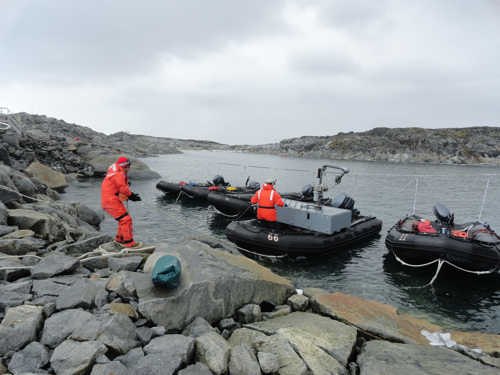
We used a variety of equipment to collect data:
CTDA research tool that is submerged in the water to measure conductivity (salinity), temperature, and depth.
First we used a device called a CTDA research tool that is submerged in the water to measure conductivity (salinity), temperature, and depth., which determines important physical properties of seawater. CTDA research tool that is submerged in the water to measure conductivity (salinity), temperature, and depth. stands for Conductivity, Temperature, and Depth. Data from CTDA research tool that is submerged in the water to measure conductivity (salinity), temperature, and depth.'s give scientists a precise record of the distribution and variation of water salinity, temperature, and density at different depths. This data is helpful for understanding how the ocean’s physical properties affect living organisms.
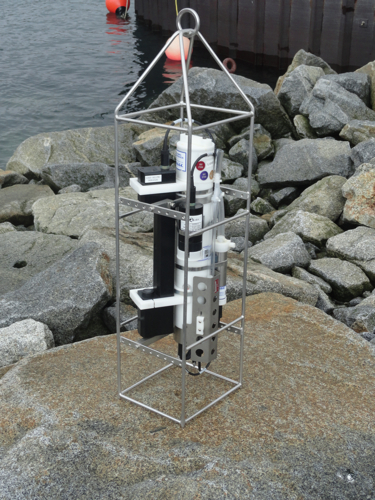
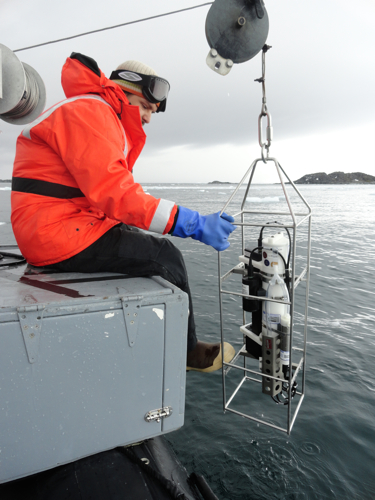
Niskin Bottles
Niskin bottles are devices for obtaining samples of seawater at specific depths. The bottles are lowered on a cable into the ocean along with a brass weight called a messenger. A series of bottles and messengers are fixed at intervals along the cable so that a series of samples at increasing depths can be taken. Niskin bottles are essentially tubes that are open at both ends. Each end is equipped with a spring-loaded cap. The messenger weight trips both caps shut and seals the tube so that water can be analyzed later in the lab.The bottle and sample inside it are retrieved by hauling in the cable. Bruiser has a motorized winch on board, which was helpful for retrieving the bottles.
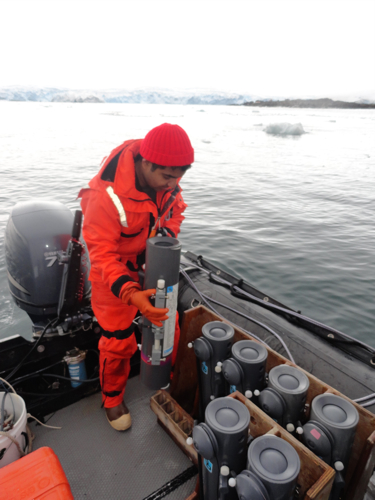
PlanktonPlankton are small or microscopic organisms that float or drift in fresh or salt water, especially at or near the surface, and serve as food for fish and other larger organisms. Net
Oceanographers use nets to catch plankton. The nets have mesh openings small enough to concentrate the plankton while still allowing water to pass through. PhytoplanktonSmall or microscopic aquatic plants that float or drift in fresh or salt water. nets have very small mesh openings (about 36/1000 of a mm) and zooplankton nets have larger meshes (about one 1/3 to 1/2 of a mm). The nets are attached to wire and towed behind the ship. PlanktonPlankton are small or microscopic organisms that float or drift in fresh or salt water, especially at or near the surface, and serve as food for fish and other larger organisms. tows can be done at any depth or time of day; the net we dragged today was about 5 meters deep.

Hyperspectral Radiometer
Travis and Nikhil also call this instrument “the spear.” The hyperspectral radiometer is used to measure the spectral composition of light in the water. In simple terms it means it can measure which different visible light waves are traveling through the water and lighting up the underwater environment. The types of light that are able to travel through the water are influenced by what lives there. Data collected will be used to estimate the concentration and types of phytoplankton and microbes in the water.
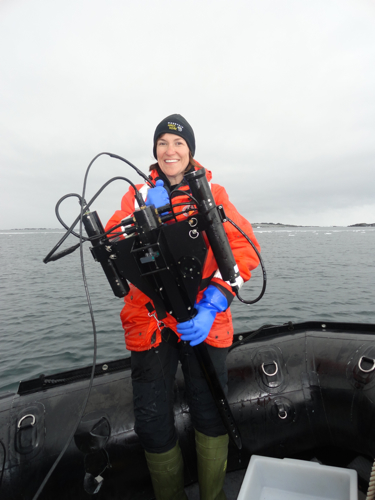
We had a visitor while sampling this morning. He had external ears and hind flippers that rotate forward. Can you identify him? Check it out:
http://
This afternoon I went back out on the water with Boating Coordinator, Ryan Wallace, Travis Miles and Katie Brennan.
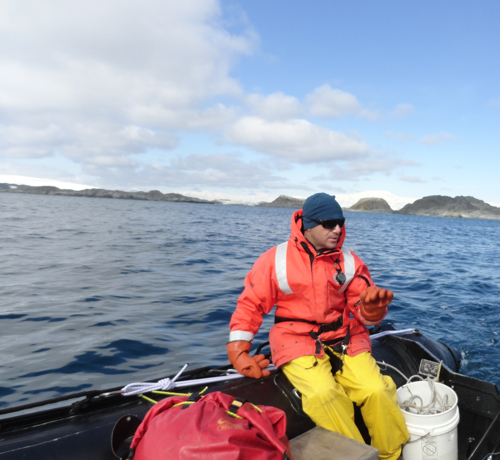
Travis and Katie were retrieving two Slocum gliders that have been collecting data for the past three weeks. They used a GPSA Global Positioning System (GPS) is a satellite-based navigation system used to track the location or position of objects on the Earth’s surface. to find each glider and then a satellite phone to call scientists at Rutgers University. Exact geographic coordinates for each pickup point were recorded at Rutgers. It seemed very strange to me that Travis was sitting in a zodiac in the Southern Ocean talking on the phone with someone in New Jersey! Here's a short video of the glider retrieval process. It was exciting to see!
http://


Comments